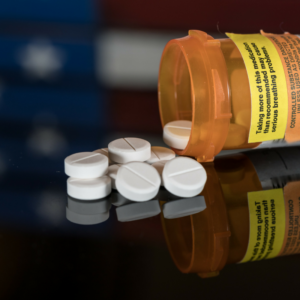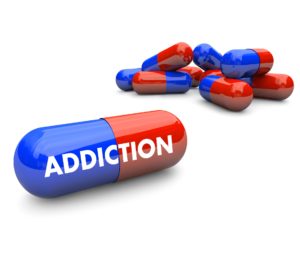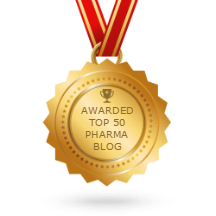by Gabriel Levitt, President, PharmacyChecker.com and Prescription Justice | Apr 12, 2018 | Drug Importation
 It’s widely known that Americans buy medications from Canada and other countries because the prices are much lower. What many people do not know is how people are doing this.
It’s widely known that Americans buy medications from Canada and other countries because the prices are much lower. What many people do not know is how people are doing this.
Even our foremost scholars on the issue of U.S. pharmaceutical prices don’t know. In an article published in the prestigious British Medical Journal (BMJ), readers are informed that:
“A modest proportion of U.S. citizens travel to Canada and Mexico to purchase lower priced prescription drugs.23”
That footnote – 23 – links to a 2016 Kaiser Family Foundation Health Survey, which includes the question:
“Have you or another family member living in your household ever bought prescription drugs from Canada or other countries outside the United States in order to pay a lower price, or not?”
Eight percent of respondents said that they had, which is about 20 million Americans, but the survey did not ask how they did it.
The data is far from perfect. I looked at several data sources when I wrote a report in 2015 called Online Pharmacies, Personal Drug Importation and Public Health. In one analysis of an FDA survey in 2012, I estimated that about six million Americans were purchasing medication from outside the U.S. over the Internet. I believe that figure is somewhat inflated. (more…)
Tagged with: Aaron Kesselheim, BMJ, CDC, Daraprim, Kaiser Family Foundation, lomustine, Ravi Gupta
by Gabriel Levitt, President, PharmacyChecker.com and Prescription Justice | Mar 9, 2018 | Drug Safety
 According to a new study, it turns out that, potentially, millions of people should have been prescribed over-the-counter drugs—not addictive narcotics. That’s a major finding considering 600,0000 Americans have died from drug overdose between 1999-2016. The Journal of the American Medical Association (JAMA) study shows that over-the-counter medications, such as ibuprofen, acetaminophen, aspirin and naproxen may work better than the hard, addictive stuff, such as Vicodin, Oxycontin, and Fentanyl.
According to a new study, it turns out that, potentially, millions of people should have been prescribed over-the-counter drugs—not addictive narcotics. That’s a major finding considering 600,0000 Americans have died from drug overdose between 1999-2016. The Journal of the American Medical Association (JAMA) study shows that over-the-counter medications, such as ibuprofen, acetaminophen, aspirin and naproxen may work better than the hard, addictive stuff, such as Vicodin, Oxycontin, and Fentanyl.
We recognize and respect the role that properly prescribed prescription narcotics have played and will continue to play in pain management. However, we also believe that Big Pharma makers and sellers of opioids caused this national crisis of drug addiction by helping to create looser prescribing rules. In other words, while at one-time opioid medications were viewed as a last resort to treat serious pain, drug companies pushed medical education that led to the prescribing of opioid drugs. The U.S. Centers for Disease Control and Prevention has revised its guidelines to encourage far tighter prescribing practices, but, as this study indicates, their revisions came way too late.
Patients Who Took Opioids
The JAMA study looked at 248 patients with varying levels of pain, back pain being the most prevalent form affecting 65% of patients. Others had pain associated with hip, knee and that associated with osteoarthritis. One group of patients were prescribed opioid medications. They started with fast acting morphine, a combination of hydrocodone and acetaminophen, or oxycodone. Long acting medications, morphine or oxycodone, were used when the short acting treatments were not working. When those did not work, fentanyl patches were prescribed.
Patients Who Took Non-opioids
Another group took NSAIDs. If NSAIDs did not work, then the group took other prescription medications, such as gabapentin (Neurontin) or pregabalin (Lyrica). If those didn’t work, then tramadol, which is an opioid-based painkiller but less addictive than the ones in the opioid group.
Results of the Study
Patients in the non-opioid group reported equal or better results in pain alleviation than patients in the opioid group. Admittedly, I’m confused because tramadol was in the non-opioid group, even though it’s an opiate-based medication. Also, one shortcoming variable of the study is that patients knew what medications they were taking, which could have biased their reporting.
Overall, the study strongly demonstrates that millions who were prescribed strong opioid drugs and became hooked could just as well have been treated initially with regular OTC pain medications. Not surprisingly, patients could have also saved billions of dollars over the last few decades by taking aspirin instead of brand-name prescription opioids.
This has really caught my attention because the industry-funded groups like the Alliance for Safe Online Pharmacies and Partnership for Safe Medicines equates importation from Canada with the opioid crisis. Instead of urging people to seek alternatives to opioids, the pharmaceutical industry propagates the senseless idea that increasing imports of lower cost (non-pain) medications from Canada will worsen the opioid crisis. They would rather point fingers than address the sickness of their complicity in creating the drug addiction crisis in the first place.
Tagged with: Alliance for Safe Online Pharmacies, CDC, JAMA, NSAIDs, opioids, OTC, Partnership for Safe Medicines
by Gabriel Levitt, President, PharmacyChecker.com and Prescription Justice | Jun 1, 2017 | Controlled Drugs

Pharma Pushing Drugs at your Local Pharmacy
There’s a big lie peppered throughout news articles about buying medication online: 50% of medications ordered online are counterfeit, based on a report by the World Health Organization (WHO). That claim is without merit, but nonetheless pushed as fact by pharma-funded groups like Alliance for Safe Online Pharmacies. WHO never conducted such a study. In its section on counterfeit drugs, WHO used to reference an unnamed study claiming that 50% of medications ordered from illegal online pharmacies that don’t publish a mailing address are counterfeit. WHO finally removed it from its latest public education page on counterfeit drugs. That “data” has worked to scare people away from buying more affordable medication online from other countries.
What does this have to do with the opioid addiction crisis and drug company propaganda? This week it was widely reported that, essentially, drug companies fueled the epidemic of opioid abuse in America by misusing a single letter written by a doctor in 1980 about the benefits of opioids. The letter was to the New England Journal of Medicine and stated that only four people out of 40,000 who received treatment with prescription opioid medications became addicted. It was not a peer-reviewed study or even a study at all! From CBS News:
“And that is how a one-paragraph letter with no supporting information helped seed a nationwide epidemic of misuse of drugs like Vicodin and OxyContin by convincing doctors that opioids were safer than we now know them to be.”
The devil (and that’s not a euphemism) is truly in the details. The author of the letter, Dr. Hershel Jick, affirmed that the letter was meant to cover patients in a hospital setting in the short-term, not out-patient settings, long-term use, or for pick-up at a pharmacy when someone has backpain. Dr. Jick stated: “I’m essentially mortified that that letter to the editor was used as an excuse to do what these drug companies did.” (more…)
Tagged with: 1980 letter, abuse, CDC, jick, opioid, overdose, Partnership for Safe Medicine
 It’s widely known that Americans buy medications from Canada and other countries because the prices are much lower. What many people do not know is how people are doing this.
It’s widely known that Americans buy medications from Canada and other countries because the prices are much lower. What many people do not know is how people are doing this.



